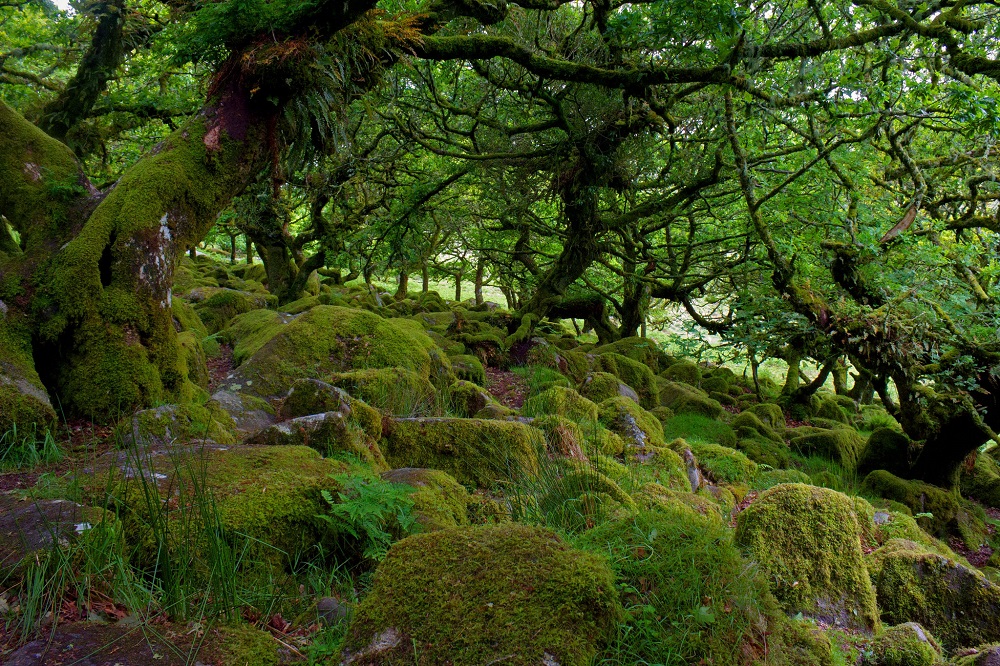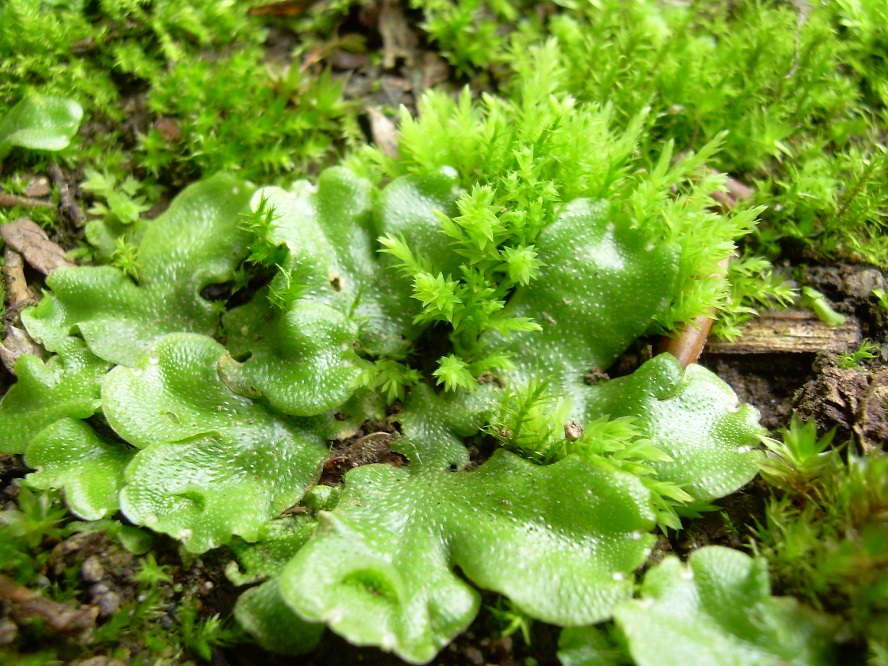How to recognise a Celtic rainforest when you see one

John Healey, Professor of Forest Sciences, Bangor University
The term “temperate rainforest”, or “Celtic rainforest”, has rapidly gained public attention in the UK recently.
In February 2023, British insurance company, Aviva, awarded £38 million of funding for the restoration of these rainforests. These restoration efforts have even caught the interest of Prince William, who has announced plans to double the size of Wistman’s Wood, an iconic fragment of ancient woodland on his Dartmoor estate.
Britain was once covered with trees. But over thousands of years, ancient woodland in wetter areas of the country’s west were cleared and converted into pasture for sheep and cattle. By the start of the 20th century, Britain and Ireland had become the least-wooded region in Europe, with only small fragments remaining in both countries’ western coastal rainforest zones.
But how much of this woodland actually counts as rainforest? The complex variation among different types of woodland makes it difficult to classify them as either rainforests or non-rainforests. And while the climate in Britain and Ireland is wet relative to the south and east of Europe, the question remains: how wet is wet enough to support a rainforest?
To understand if an area can support a rainforest, it’s important to consider not just the mean annual rainfall, but also that it rains across the seasons. Some areas in the Mediterranean basin receive the same amount of annual rainfall as parts of Great Britain. But this rain is concentrated in the winter, and prolonged periods of drought during the summer prevent the formation of a recognisable rainforest.
In Britain and Ireland, the climate is characterised by lower seasonality in rainfall, with dry summers being the exception rather than the rule. However, most climate models predict that this will change in the future, meaning that fewer areas of these islands will be able to support rainforests.
But rainfall alone does not determine the presence of rainforests. The availability of water in the soil, which is influenced by factors such as soil depth, texture and organic matter content, plays a crucial role in supporting rainforest trees. Even in areas with high rainfall, thin soils can lead to conditions prone to drought.
So, this leaves us with a dilemma: how can you spot a rainforest in Britain and Ireland?
Characteristic types of plant
The most iconic plant types characteristic of temperate rainforests are the epiphytes. These are plants that grow above the ground and attach themselves to the stems of trees or shrubs.
Epiphytes, including orchids, are an important component of biodiversity in tropical rainforests. By contrast, most of the epiphytes in temperate rainforests are “lower plants”, such as ferns and plants lacking a vascular system to move water within them, like mosses, liverworts and lichens.

Horizontal precipitation
Epiphytes gain some of their moisture from water that trickles down the trunks of trees during heavy rainfall (a process called “stem flow”). But these plants do not solely rely on rain.
In upland or coastal environments, where ground-level cloud or mist is common, another important source of moisture for epiphytes is horizontal precipitation (droplets of water that are suspended in the cloud). This moisture source is particularly important for the epiphytes that are most susceptible to drought, such as filmy ferns and some mosses and lichens.
Woody climbers
The UK’s temperate rainforests have several other features that are reminiscent of their tropical counterparts. One such feature is woody climbers (or liana) that use trees to ascend to the forest canopy. Classic examples of these plants in Britain and Ireland are ivy, clematis and honeysuckle.
However, the presence of woody climbers alone is not indicative of a temperate rainforest. While ivy, for example, is most abundant in wetter forests, these three liana species can be found across a range of woodland types in Britain and Ireland, even in the drier eastern regions.
Tree structure
The species of tree found in rainforests in Britain and Ireland are not good indicators of their rainforest status. The dominant canopy tree in many is sessile oak, which is the same species that dominates many forests producing straight stems of high-quality oak timber in northern France.
What better distinguishes a rainforest in Britain or Ireland is the structural characteristics of the trees. In rainforests near the west coast, such as on Dartmoor, the trees tend to be short, with leaning trunks and low branches.
However, this small tree structure is unlikely to be a direct result of high rainfall. The canopy trees of temperate rainforests in even wetter areas of coastal Oregon, Washington State and British Columbia in North America reach at least twice the height (40 metres or more). The distinctive short stature of trees in Britain’s rainforests is instead probably influenced by a combination of factors, including exposure to high winds and infertile thin soils, both of which are characteristic of the Atlantic coastal and upland environments of western Britain and Ireland.
The temperate rainforests of Britain and Ireland are rapidly assuming an iconic status, conjuring up a vivid image of mist, moss and convoluted trees.
But these woodlands are more than just visually captivating – they are rare habitats that are crucial for many endangered species, especially epiphytes. Unfortunately, they are also vulnerable to the effects of climate change. This makes them a fitting focus for new initiatives targeting their restoration.
You can find out more about the Celtic rainforests in Wales here…….
This article was first published on The Conversation
![]()
Support our Nation today
For the price of a cup of coffee a month you can help us create an independent, not-for-profit, national news service for the people of Wales, by the people of Wales.







I live in a valley with one of these “rain forests” on one side. Last winter lots of mature beech trees were felled in this forest for the crime of not being considered a native species, despite having existed in Wales for centuries. Said trees formed what the contractor stated was a perfectly closed canopy and the birdsong in spring was deafening, many birdwatchers would rate a visit to our valley as very rewarding. Now there’s big holes in the canopy and I dearly hope we do not get another “Beast from the East”, as Easterly winds have been given… Read more »